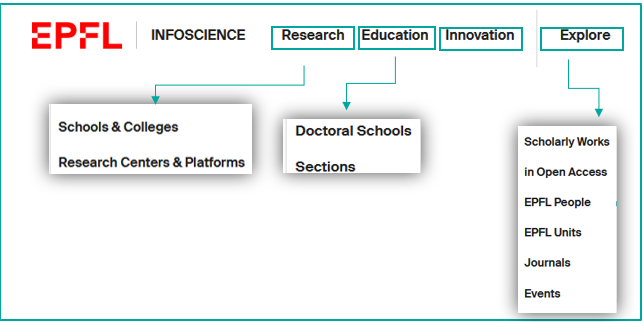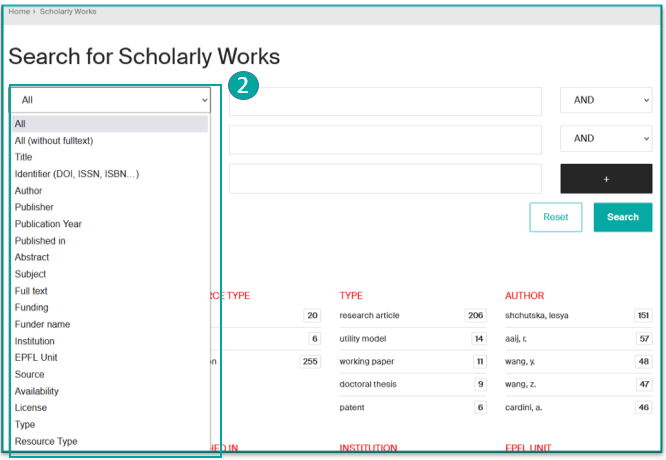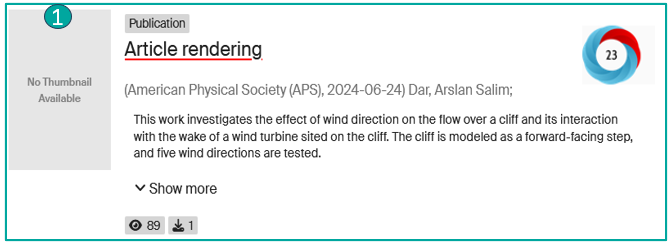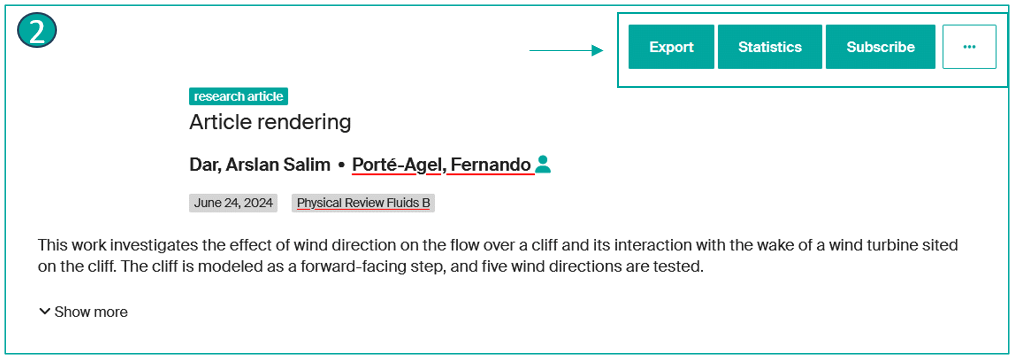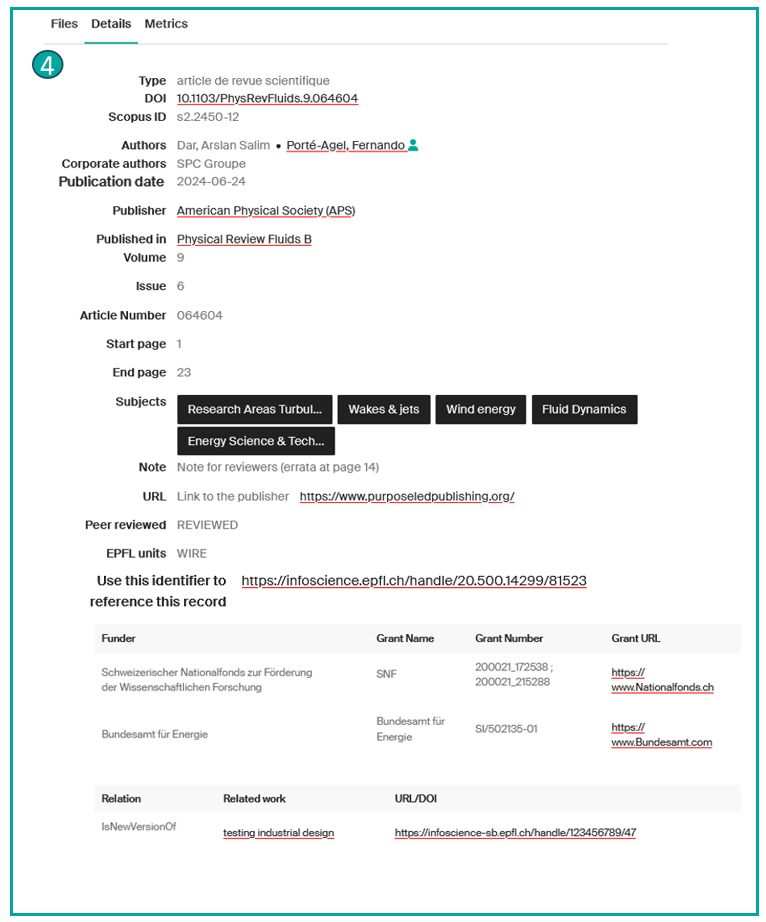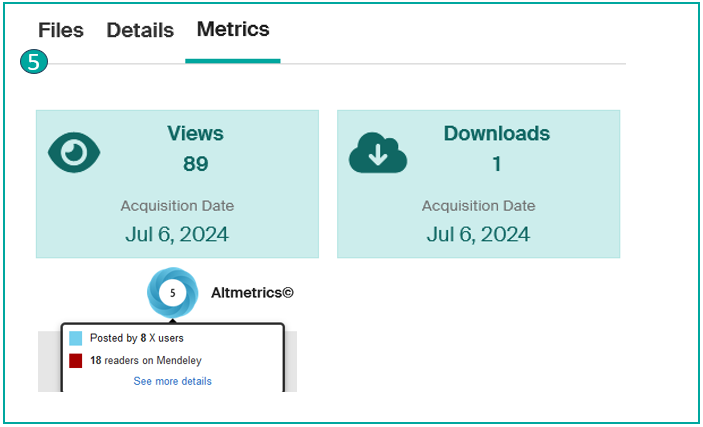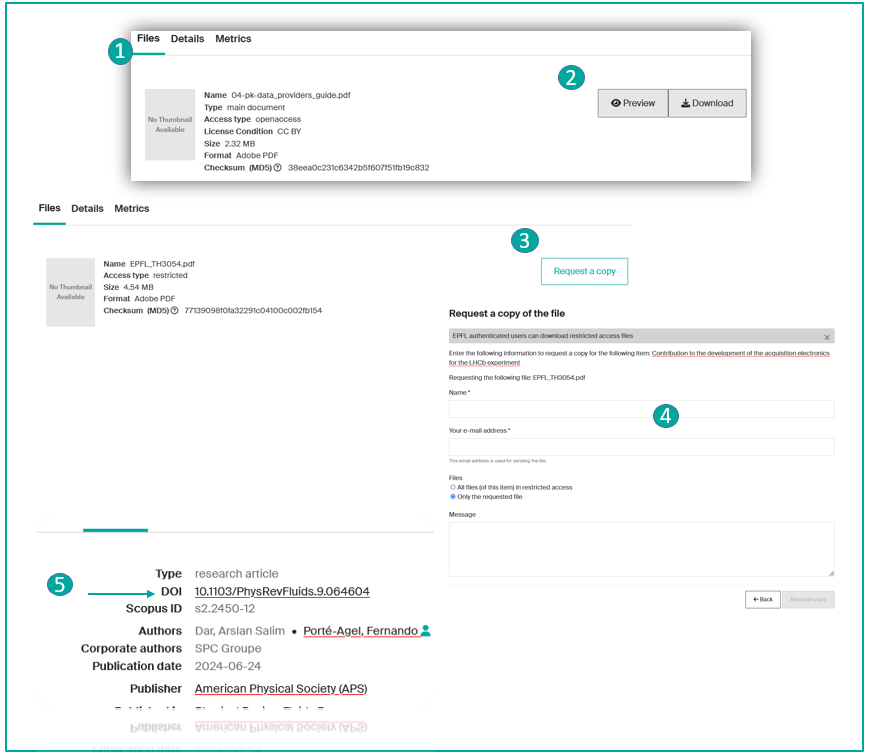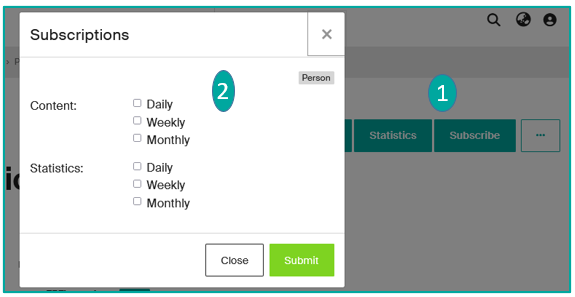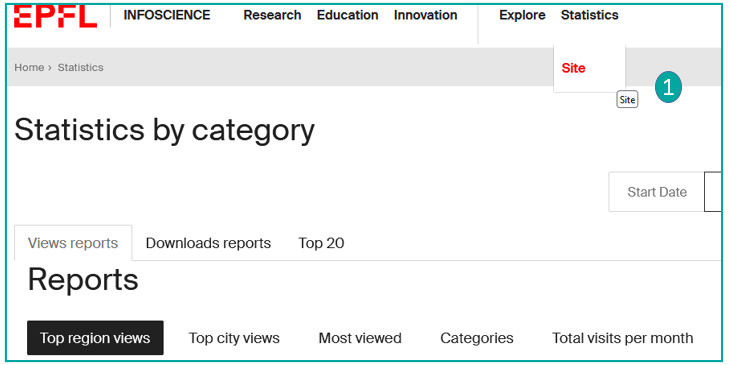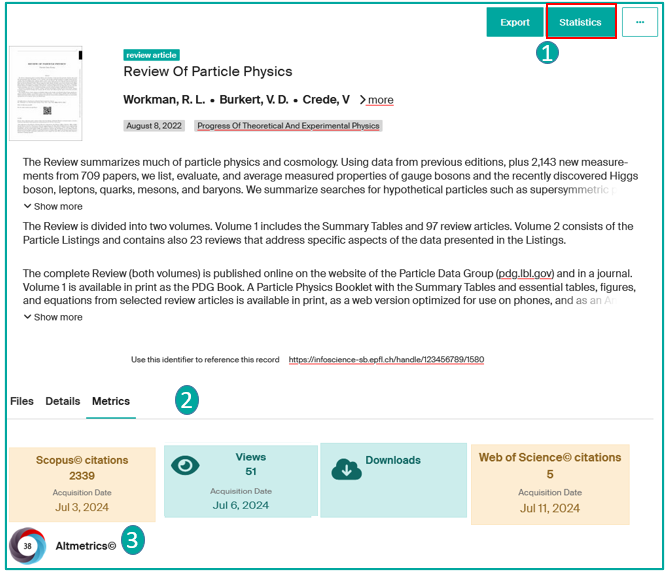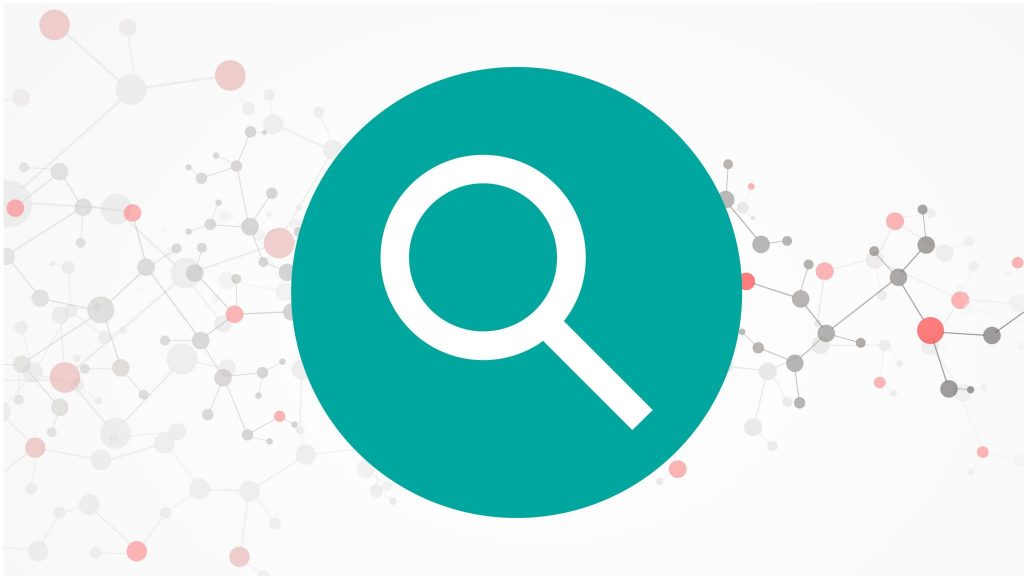
To find a publication, an author, a laboratory or a specific subject, browse through Infoscience!
(EPFL authentication is not required)
The search bar on the homepage allows you to search for one or more keywords: name, title, subject, date… You will find publications and works corresponding to these criteria.
In the search bar, enter the desired terms, then click on Search.
Display results and use filters
When the list of results is displayed, you can:
- Refine it by using the filters offered on the left (Document Type, Authors, Date, License, … .)
- Sort the list using the parameters offered at the bottom left (relevance, deposit date, …).
- Modify the number of results displayed, at bottom left.
Note: Various tips can facilitate your search. Discover them by consulting the expert queries examples.
Menus allow you to browse content from several entry points:
- Search:
- Schools & Colleges
- Research Centers & Platforms
- Education:
- Doctoral Schools (EPFL thesis)
- Sections (student works)
- Innovation (patents)
Explore: to browse Infoscience content through lists ordered by:
-
- Scholarly Works (advanced search)
- In Open Access
- EPFL People
- EPFL Units
- Journals
- Events
By default, records are presented in brief form. Clicking on the title takes you to the detailed record.
The brief record (1) presents:
- The type of content (here “Publication”)
- Access type (if available)
- The title
- The publisher (or container)
- The first authors (clickable to see their profile if available)
- The beginning of the abstract
- Statistical indicators of consultation and/or downloading (if the record has been consulted and/or the file downloaded)
- An Altmetric widget (if available) that measures and monitors the scope and impact of online academic research.
The detailed record (2) presents:
- Document type
- Deposit date
- Journal name
- an Export button for exporting information from the record in various formats (RIS, JSON, Cerif-XML, Datacite-XML, CSV and Bibtext)
- the Statistics button for accessing statistical details (Total visits, total visits per month, Top city views, File visits), with the option of exporting them to Excel or CSV.
- a Subscribe button (only visible to registered EPFL users): Allows you to trigger alerts about the record updates.
- a “…” button displays all the record’s metadata (technical view).
In the Files tab, information about the file(s) (3):
- the file name
- the file version/type
- the access type
- file licence
- file size
- file format
- file checksum
- and if the file can be read or download
In the Details tab (4):
- Resource type
- DOI if present,
- Scopus ID*
- The complete list of authors
- Corporate authors*
- Publication date
- Publisher
- Journal title
- Volume*
- Issue*
- Article Number*
- Start and End Page*
- Keywords
- Note*
- Additional Link*
- If Peer reviewed
- The unit corresponding to the publication
- the Handle (permanent and unique link to the record)
- An insert on Funder*
- Relation, if the record is linked to another record*
*If available in the record
In the Metrics tab (5):
- The number of times the record has been consulted
- The number of downloads of the record
- An Altmetrics widget can be added to measure and monitor the reach and impact of online academic research.
When a record contains one or more files, you have different options:
- If the file is Open Access, go to the “Files” tab (1), preview or download the desired file(s) (2). You have the option to download one or more files:
- If the file is restricted access:
– for non-EPFL users, you can request a copy for your personal use. To do this, go to the “files” tab, then click on “Request a copy” (3). Once the request form has been filled in (4), if the author agrees, you will receive an e-mail containing a temporary access link to the file(s).
– for EPFL users, restricted-access files are accessible after authentication with the Gaspar account via Tequila.
- For documents under embargo, the file(s) become accessible after the release date indicated on the record details. However, you can still access the file(s) by requesting a copy.
Note: Infoscience records may not include an attached file. A link to the full text (e.g., DOI) (5) may allow you to access the file directly on the publisher’s page.
To obtain more precise results, we strongly recommend that you build well-defined queries using the available indexes. Here are a few examples of queries to help you create your publication lists efficiently.
- Search for all references for a given author:
Query:
author:(bierlaire, michel)
https://infoscience.epfl.ch/search?spc.page=1&query=author:(bierlaire, michel)&configuration=researchoutputs
- Search for all references for a person with the role of author or scientific editor:
author_editor:(bierlaire, michel)
https://infoscience.epfl.ch/search?spc.page=1&query=author_editor:(bierlaire, michel)&configuration=researchoutputs
- Search for all references assigned to a unit:
Exemple :
dc.description.sponsorship:LASUR
- Limited to publications from the last three years, use:
https://infoscience.epfl.ch/searchspc.page=1&query=dc.description.sponsorship:LASUR&configuration
=researchoutputs&f.dateIssued.min=2022&f.dateIssued.max=2024
- Filter by type of publication:
To restrict the search to certain types of publication, for example ‘research articles’ and ‘conference papers’, use :
dc.description.sponsorship:LASUR AND (types:(research article) OR types:(conference paper))
https://infoscience.epfl.ch/search?spc.page=1&query=dc.description.sponsorship:LASUR AND (types:(research article) OR types:(conference paper))&configuration=researchoutput
- Sorting results:
By default, Infoscience sorts search results by relevance. However, if you prefer a different sorting mode, you can use the options on the left under the filters/facets. For example, to sort results by publication date in descending order, follow this link :
https://infoscience.epfl.ch/search?spc.page=1&query=dc.description.sponsorship:LASUR&configuration=
researchoutputs&spc.sf=dc.date.issued&spc.sd=DESC
It’s important to define the sorting you want for your list of publications as soon as you build the query.
By following these steps, you can easily create and customise a list of publications for your unit on WordPress.
For further assistance, please contact Infoscience support.
Would you like to be informed about new publications related to a laboratory, an author, a journal, a conference, a patent, or a unit in Infoscience?
Infoscience allows you to receive email alerts at your preferred frequency.
The Subscribe button (1) available on certain pages (publications, people, journals, events, units) lets you subscribe with a single click and select the content and frequency of the notifications (2).
Attention: Only logged-in users can activate this service.
Site statistics:
From the top banner, you have the option to view Statistics by clicking on “Site” (1).
You will find reports on views, downloads, and the Top 20 statistics for the entire Infoscience platform.
At the bottom page, you will find more details:
- Top views by region
- Top views by city
- Most viewed
- Categories
- Total views per month
You can export these reports to Excel and CSV.
Record statistics:
You can consult the statistics for each record by:
- Clicking on “Statistics” button (1)
- Total views
- Total views per month
- Total views by city
- Views (files)
You can export these reports to Excel and CSV.
- Clicking on the Statistics tab at the bottom of the record (2):
- number of times the record has been consulted
- number of downloads of the file
- see, via a tool called ‘Metrics’ relating to the publication: Number of Scopus and Web of Science citations, Altmetrics (3), link to the resource description in Google Scholar if present.
By clicking on these widgets (3), you can access the same details.
Profil statistics:
See Manage my Researcher profil
Unit statistics:
See Manage my unit


